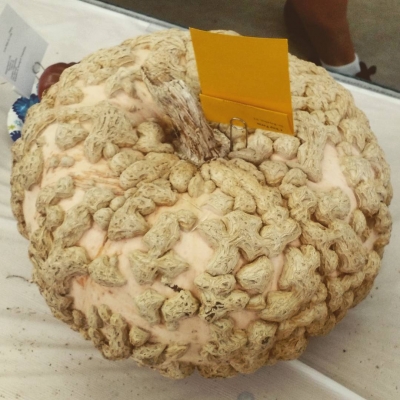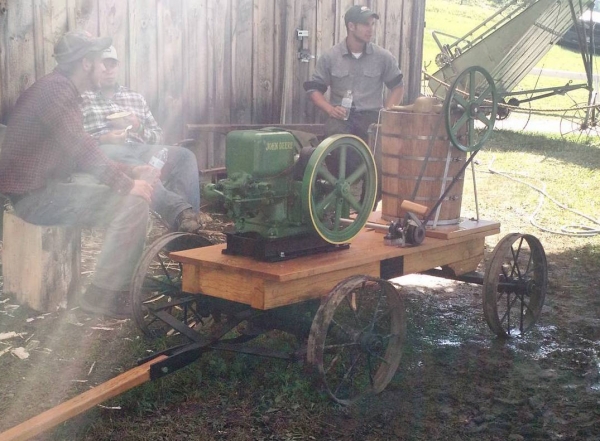This is a re-posting of an article from autumn of 2014 – updated to reflect what’s happening in 2016. We’re at the start of apple season now, be sure to keep checking back for more information as the fall continues!
Original post by Helen Labun Jordan – read more about Vermont apples in her article “Apples’ Golden Age” in the 2014 issue of Vermont’s Local Banquet. The 2016 autumn issue is now out, and is available for pick up in stores around the state and online at www.localbanquet.com
When Vermonters want to taste a unique apple, most of us reach for the closest heirloom variety. The definition of “heirloom” isn’t set in stone, but generally speaking it’s an apple variety born around the same time as our Great- Grandparents, or older. Today, heirloom apples are much easier to find than even a few years ago. I’m most familiar with the varieties from Scott Farm in Dummerston, VT. These apples, with names like Sheep’s Nose, Belle de Boskoop, and Knobby Russet, arrive on local store shelves across the state every fall. The store I shop at, Hunger Mountain Co-op, hands out guides to the farm’s 90 varieties of apples in a stack next to the apple bins. I’ve also made the trek south to the farm itself, a historic place where Rudyard Kipling once lived, that’s open seven days a week during the harvest.
The reason why I look for heirloom apples is because these varieties first came into popularity through backyard growers or very small orchards – venues that could value taste or an apple’s ability to serve a particular purpose (like pie baking) very well. These places did not select for other, less tasty, concerns like the ability to be shipped across the country or grow skin without a single blemish. But as much as I’ve thought about backyard growers in the 1800’s and the varieties they tended for future generations, I never thought about today’s backyard growers and the role they still play.
Todd Parlo of Walden Heights Nursery recently set me straight about the backyard orchardists: they’re still around, their numbers are growing, and they have a critical role to play in giving us a wonderfully diverse range of apples to sample.
Walden Heights Nursery, in Walden VT, sells more than apple trees (including pears, grapes, cherries and plums) but apples are clearly a passion of Todd’s. He has hundreds of varieties of apples growing right now. Hundreds, plural. His long term plan is to hover at 350 – 400 different kinds growing at any one time.
It turns out that when you’re experimenting with apples simply because you love to experiment with apples, you can create a lot of diversity.
There are several apple attributes that make them well-suited to playing with many varieties. For one thing, growers reproduce apples by grafting. Instead of growing a new tree from seed, they add a bud from one tree to rootstock, trunk, or branch of another. From that start, you can grow a seedling of one variety or, if you graft wood from multiple different trees onto a single trunk, you can get one tree with many apple varieties that change from branch to branch.
Also, the reason why apples are propagated by grafting in the first place is that apples grown from seed don’t make the same fruit as their parents, they make something new. . . adding a new variety to the mix. Usually this new tree is not something that anyone would want to continue growing, but sometimes it’s a happy surprise — the classic Granny Smith apple came from a seedling that grew out of a bunch of apple cores dumped in a compost pile in 1868 and the first McIntosh was found as a wild seedling by a farmer clearing his field.
And, of course, nurseries will sell seedlings of the known varieties, including heirlooms, some of which have recently been brought back from the brink of disappearing.
I asked Todd to describe some of the unique apples in his orchard that I might not have tasted before. He listed Beacon apples that taste like anise, Sweet Sixteen apples that taste like cherry lollipops, Sunrise apples that taste more like grapes than apples. . . and of course there are also his own experiments still in development. Plus, his website offers: “. . . we can custom graft nearly any variety that is still in existence, or from wood from your own tree.”
Not everyone has a backyard they’re about to convert into a miniature orchard. I don’t. But I do enjoy wandering through other people’s orchards and daydreaming about what is possible. It’s a natural version of Charlie’s Chocolate Factory – endless flavors, textures, and aromas in eye catching apples that I never would have imagined when surveying rows of the standard Red Delicious. Some ways to vicariously satisfy your own inner orchardist in Vermont this fall:
• Visit one of the many Pick Your Own apple orchards open around the state
• Play apples to iPods at one of 21 orchards around the state – see details at the VT Department of Tourism information page
• Sample Vermont’s specialty products that are designed to show off unusual flavors in our apples – particularly traditional hard ciders, ice ciders, and boiled cider syrup.
Source: Dig in VT Trails


